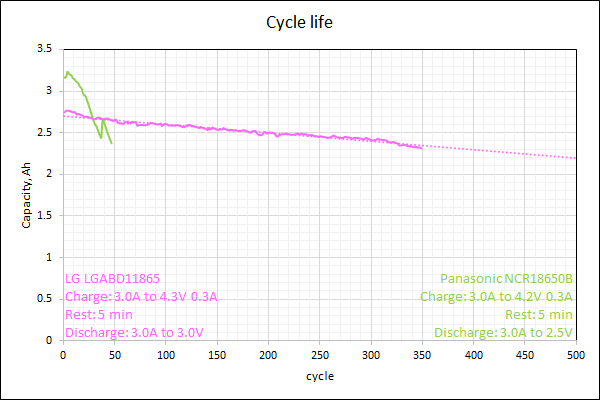cwah
100 MW
Hello all,
I've read and tested cells in the past, and I've found out the key cause to reduce life cycle are:
- Final charge voltage. The closer to 4.2V the faster the cell loses permanent capacity/increase resistance. Charge up to 4.05V can increase up to 300% (need ref)
- Charge rate. I've noticed on my trial that the higher the charge rate, the faster the cell loses permanent capacity/increase resistance. So ideally charge as low as possible and only use fast charge in case of urgency
- Discharge rate and heat. So for high discharge try not to do it continuously. Ref needed
Does anyone knows if final discharge voltage have an impact? Does discharging to 2.5V decreases life cycle? I know there is a risk of permanent damage but is it related to capacity loss?
I've read and tested cells in the past, and I've found out the key cause to reduce life cycle are:
- Final charge voltage. The closer to 4.2V the faster the cell loses permanent capacity/increase resistance. Charge up to 4.05V can increase up to 300% (need ref)
- Charge rate. I've noticed on my trial that the higher the charge rate, the faster the cell loses permanent capacity/increase resistance. So ideally charge as low as possible and only use fast charge in case of urgency
- Discharge rate and heat. So for high discharge try not to do it continuously. Ref needed
Does anyone knows if final discharge voltage have an impact? Does discharging to 2.5V decreases life cycle? I know there is a risk of permanent damage but is it related to capacity loss?



